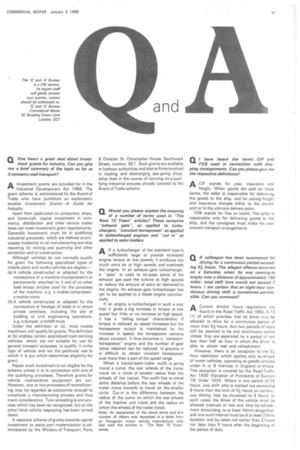Q Would you please explain the meaning of a number
Page 53

If you've noticed an error in this article please click here to report it so we can fix it.
of terms used in "The Next 10 Years" articles? These comprise "exhaust gate", as applied to turbochargers, "constant horsepower" as applied to turbocharged engines and "cut in" as applied to semi-trailers.
AIf a turbocharger of the standard type is
sufficiently large to provide increased engine torque at low speeds, it produces too much extra air at high speeds and overloads the engine. In an exhaust-gate turbocharger, a "gate" is used to by-pass some of the exhaust gas past the turbine at high speeds to reduce the amount of extra air delivered to the engine. An exhaust-gate turbocharger has yet to be applied to a diesel engine commercially.
If an engine is turbocharged in such a way that it gives a big increase in torque at low speed but little or no increase at high speed, it has a -falling torquecharacteristic. If torque is reduced as speed increases but the horsepower output is maintained by the increase in speed, the horsepower remains about constant. It thus becomes a -constanthorsepower" engine and the number of gear ratios required can be reduced. In practice it is difficult to obtain constant horsepower over more than a part of the speed range.
When a tractor/semi-trailer outfit is going round a curve, the rear wheels of the trailer travel on a circle of smaller radius than the wheels of the tractor. The outfit has to travel some distance before the rear wheels of the trailer move inwards to travel on the smaller circle. Cut-in is the difference between the radius of the curve on which the rear wheels of the tractive unit travel and the radius on which the wheels of the trailer travel.
Note: An explanation of the above terms and of a number of others was requested in a letter from an Hungarian motor vehicle manufacturer who had read the articles in "The Next 10 Years" series.




























































































